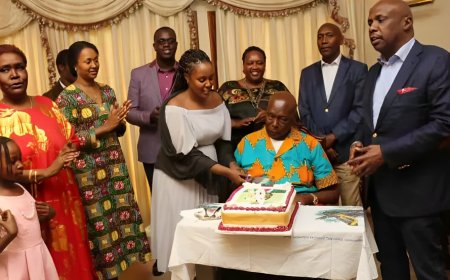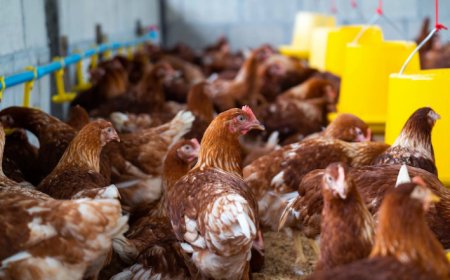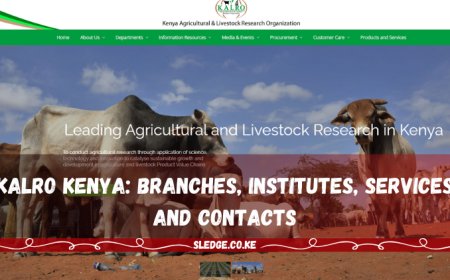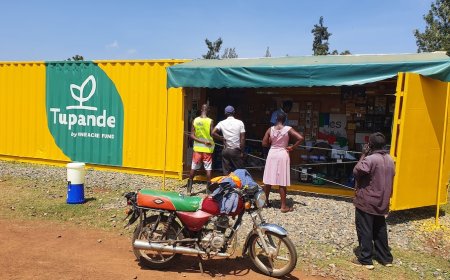The River and the Source setbook guide, Characters themes, and Analysis in 2024
Dive into Margaret Ogola's celebrated novel "The River and the Source." This guide covers the characters, themes, and a comprehensive summary. Learn how female empowerment, tradition, religion, and motherhood shape four generations of Kenyan women.

"The River and the Source," a beacon of Kenyan literature, emerges as more than just a novel; it's a tapestry of stories interwoven with the threads of cultural heritage, resilience, and transformation. Authored by the renowned Margaret Ogola, this literary gem delves deep into the heart of Kenyan society, chronicling the lives of four generations of women against a backdrop of a rapidly changing country. From the verdant Luo village to the bustling modernity of Kenya's cities, Ogola masterfully captures the essence of time and change. This book is not merely a tale; it's a mirror reflecting Kenya's journey through the lenses of tradition, colonial impact, and the undying spirit of its people. Here, we unfold the layers of "The River and the Source," exploring its rich characters, intricate themes, and a summary that encapsulates its essence, offering a comprehensive guide to understanding one of Kenya's most celebrated literary works.
In-Depth Character Analysis
Akoko: Matriarchal Strength and Defiance
Akoko, the cornerstone of "The River and the Source," is a beacon of strength and empowerment. Born as the first daughter of Chief Odero Gogni of Yimbo, she shatters the traditional confines that undervalued daughters in her community. Her beauty, intelligence, and particularly her outspoken nature, fittingly encapsulated in her name which means “the noisy one,” set the stage for her life's journey. Akoko’s marriage to Owuor Kembo, chief of Sakwa, was notable, not just for the unprecedented thirty-head cattle bride price, but for the mutual respect and love that defined their union. In a society where polygamy was the norm, Akoko’s influence leads Owuor to remain monogamous, a testament to their bond. Her life, marked by personal tragedies, including the loss of her husband and sons, is a narrative of resilience. Returning to her ancestral home, she redefines her identity, moving away from her life in Sakwa. In the Catholic mission, she plays a pivotal role in nurturing her grandchildren, instilling in them her strength and work ethic. Akoko stands as a towering figure of female empowerment, her life a testament to defiance against oppressive traditions.
Owuor Kembo: Leadership and Monogamy
Chief Owuor Kembo, Akoko's husband, emerges as a figure of wisdom, consideration, and generosity. His decision to marry Akoko, marked by his willingness to pay a hefty bride price, reflects not just his affluence but also his profound affection for her. Owuor’s leadership as the chief of Sakwa is characterized by honor and a deep respect for his wife, evidenced by his stand against polygamy, going against the grain of societal norms. His support for Akoko, especially against criticism over their family size, showcases a progressive outlook towards marital relationships and women’s role in society. The deep respect he garners from his community and his untimely demise leave a significant void, impacting Akoko and their children profoundly. His character offers a glimpse into a form of leadership that values respect and equality, even in a traditionally patriarchal setting.
Obura: Ambition and Tragedy
Obura, the firstborn son of Akoko and Owuor, embodies ambition and a thirst for knowledge beyond the confines of his immediate world. Destined to succeed his father as the chief of Sakwa, Obura's curiosity about the outside world, particularly about the changes brought by colonialism, drives him to make unconventional choices. His decision to join the Kenya African Rifles, a British regiment, during World War I, marks a significant deviation from his expected path. His tragic death in the war underscores the theme of loss and sacrifice, leaving a lasting impact on his family. Obura’s character is a poignant reminder of the younger generation's struggle to balance traditional roles and the allure of the changing world around them.
Nyabera: Resilience and Faith
Nyabera, the daughter of Akoko and Owuor Kembo, represents the enduring spirit of resilience amidst adversity. Her life is marked by a series of losses - her brothers, father, children, and husband - painting a portrait of a woman continually grappling with grief. Despite these hardships, Nyabera’s journey towards finding solace and hope, notably through her conversion to Catholicism, is a powerful narrative of transformation. Her decision to leave Sakwa and embrace a new faith signifies a bold step towards self-discovery and redefining her life's purpose. The character of Nyabera is emblematic of the struggles faced by women in Luo society and their unyielding strength in the face of life's relentless challenges.
Otieno: Antagonism and Patriarchy
Otieno, the brother of Owuor and brother-in-law to Akoko, stands in stark contrast to the other key figures in the novel. His character is shaped by jealousy, laziness, and a deep-seated adherence to patriarchal norms. His antagonistic stance towards Akoko and Owuor highlights the gender biases and the struggle for power within familial structures. Otieno's ascent to chiefdom following his brother's death and his subsequent abuse of power and attempt to usurp Akoko’s wealth paint a vivid picture of greed and corruption. His eventual removal from power, following Akoko’s bold stand, is a critical moment in the novel, emphasizing the novel's theme of female empowerment and the challenge against patriarchal dominance.
Comprehensive Summary of the Novel
The Early Years of Akoko
"The River and the Source" begins in the 1870s with Akoko, born to Chief Odero Gogni in the Luo village of Yimbo. Her life, rooted in tradition, takes a pivotal turn when she marries Chief Owuor Kembo of Sakwa, with a significant bride price of thirty cattle, symbolizing the value placed on her. Akoko and Owuor's marriage, marked by mutual respect and love, deviates from typical polygamous practices. Tragedy strikes with the untimely deaths of Owuor and their two sons, leading Akoko to make a bold decision to leave Sakwa and return to her ancestral home.
Nyabera’s Struggles and Awiti’s Emergence
The narrative then shifts to Nyabera, Akoko’s daughter, who endures her own share of tragedies, including the death of her husband and most of her children. Her journey of loss and quest for hope leads her to embrace Catholicism, a stark departure from her Luo traditions. This shift in faith represents a significant cultural and personal transformation, as she, along with her mother Akoko, daughter Awiti, and nephew Owuor, relocate to a Catholic mission. This part of the story underscores themes of resilience, faith, and the quest for a new beginning amidst profound grief.
Elizabeth’s (Awiti) Journey and Family Dynamics
Awiti, now known as Elizabeth after embracing Christianity, becomes a central figure in the narrative. Her journey is marked by education, a career as a teacher, and her marriage to Mark, a Luo man. The couple’s life, spanning the period of Kenya’s struggle for independence, is filled with challenges and triumphs, including raising seven children. Elizabeth's relationship with her children, especially her twins Becky and Vero, highlights the complexities of motherhood and the generational differences in ambitions and values. The novel concludes with the family mourning Elizabeth’s death, symbolizing the end of an era and the continuous flow of life.
Exploration of Major Themes
Tradition vs Modernity
"The River and the Source" skillfully navigates the tension between tradition and modernity. The Luo traditions, deeply ingrained in the village life, guide the characters' early actions. However, as the narrative progresses, these traditions are increasingly questioned and, at times, defied. Akoko's and Nyabera's decisions to challenge and move beyond traditional norms exemplify this shift. The novel portrays this evolution as a gradual, often challenging process, reflecting the broader societal changes in Kenya.
Female Empowerment and Resilience
A central theme of the novel is female empowerment, as seen through the lives of Akoko, Nyabera, and Elizabeth. These characters exemplify strength and resilience in the face of societal constraints and personal tragedies. Akoko's defiance against oppressive traditions, Nyabera’s embrace of a new faith, and Elizabeth’s educational and career achievements highlight the evolving role of women in Kenyan society. The novel serves as an ode to the spirit of women who navigate and overcome the challenges posed by a patriarchal society.
Cultural and Religious Transitions
Cultural and religious transitions form the backbone of the narrative. The introduction of Catholicism and its adoption by key characters signifies a significant shift from traditional Luo beliefs to a new world view. This transition is not just religious but also cultural, as it affects the characters' identities, values, and lifestyles. The novel illustrates the complexities involved in navigating these transitions, balancing the old with the new, and the impact of these changes on individual lives and community dynamics.
These themes intertwine to paint a vivid picture of the societal shifts in Kenya over a century, as seen through the experiences of a single family.
The Impact of Colonialism and Cultural Change
Colonial Influence on Characters and Society
"The River and the Source" intricately weaves the theme of colonialism throughout its narrative. The arrival of the colonists introduces new ideologies, religions, and lifestyle changes, deeply affecting the characters and the larger Luo society. This external influence is evident in the characters’ evolving attitudes, especially in their adoption of Christianity and changing family structures. The novel captures the confusion, curiosity, and sometimes resistance that Kenyan society experiences in response to colonialism, portraying a nuanced picture of its impact on individual lives and communal identity.
Transition from Luo Traditions to Catholicism
The transition from traditional Luo beliefs to Catholicism is a pivotal aspect of the story. This shift is not merely religious but symbolizes a broader cultural change. Characters like Nyabera and Awiti (Elizabeth) represent this transition, moving from their indigenous beliefs to embracing a new faith. This change also mirrors the transformation of societal values, as the novel illustrates the challenges and adaptations required to reconcile traditional beliefs with new religious teachings. The story, therefore, becomes a metaphor for Kenya’s broader cultural metamorphosis during this period.
Education and its Role in Cultural Shifts
Education emerges as a key element in the novel, symbolizing modernity and progress. Characters like Elizabeth, who pursue formal education and careers, represent a break from traditional roles confined to the domestic sphere. The novel highlights how education, especially for women, becomes a tool for empowerment and societal change. It also touches on the tension between traditional knowledge and the "white man’s education," reflecting the broader implications of colonial influence on Kenyan society and its value systems.
This part of the novel underscores the profound impact of colonialism and the subsequent cultural shifts, painting a vivid picture of a society in transition.
READ ALSO: Betrayal in the City: A Profound Examination of Power, Corruption, and Hopelessness
Conclusion
Margaret Ogola's "The River and the Source" is more than just a story; it's a tapestry of life, history, and humanity. It's about women who defy, embrace, and shape their world. It's about a country in flux, a culture in evolution, and unbreakable family bonds. Isn't it time to embrace the journey?
Frequently Asked Questions (FAQs)
What is the main message of "The River and the Source"?
- The novel portrays resilience, cultural evolution, and the role of women in shaping society.
How does Akoko symbolize female empowerment?
- Akoko represents strength, defiance against tradition, and the capacity to forge her path.
What is the impact of colonialism in the novel?
- Colonialism brings cultural upheavals, changes in belief systems, and the transition towards independence.
How does the novel depict motherhood?
- Motherhood is portrayed as a complex and vital role in family and societal continuity.
How are the themes of tradition and cultural change interwoven?
- Tradition guides life in the early parts of the story, while cultural change reflects the broader transformation of Kenyan society.
Who are some key characters, and what do they represent?
- Characters like Akoko, Elizabeth, and Aoro represent different generations and societal shifts.












































































